Have A Look At
GAY GUIDE TO CHINA
Gay Guide to China. The best gay bars & night clubs, gay rated hotels, gay saunas and massage spas in China including Shanghai, Beijing, Suzhou, Hangzhou, Guangzhou,Xi'an, Shenzhen & Hong Kong.



Overview China
Introduction to China
China is one of the Four Ancient Civilizations (alongside Babylon, India and Egypt), according to Chinese scholar Liang Qichao (1900).It boasts a vast geographic expanse, 3,600 years of written history, as well as a rich and profound culture.Many aspects of Chinese culture can be traced back many centuries ago.Chinese culture is so diverse and unique, yet harmoniously blended, and presents itself an invaluable asset to the world.
Geography
Covering approximately 9.6 million square kilometers, China is the world's second-largest country by land area,[16] and either the third or fourth-largest by total area, depending on the method of measurement.[i] China's landscape is vast and diverse, ranging from forest steppes and the Gobi and Taklamakan deserts in the arid north to subtropical forests in the wetter south. The Himalaya, Karakoram, Pamir and Tian Shan mountain ranges separate China from South and Central Asia. The Yangtze and Yellow Rivers, the third- and sixth-longest in the world, run from the Tibetan Plateau to the densely populated eastern seaboard. China's coastline along the Pacific Ocean is 14,500 kilometres (9,000 mi) long, and is bounded by the Bohai, Yellow, East and South China Seas.
Population
With a population officially just over 1.3 billion and an estimated growth rate of about 0.6%, China is very concerned about its population growth and has attempted with mixed results to implement a strict birth limitation policy. China's 2002 Population and Family Planning Law and policy permit one child per family, with allowance for a second child under certain circumstances, especially in rural areas, and with guidelines looser for ethnic minorities with small populations. Enforcement varies, and relies largely on "social compensation fees" to discourage extra births. Official government policy opposes forced abortion or sterilization, but in some localities there are instances of forced abortion. The government's goal is to stabilize the population in the first half of the 21st century, and current projections are that the population will peak at around 1.6 billion by 2050.
Government
China, officially the People's Republic of China, is a sovereign state located in East Asia. It is the world's most populous country, with a population of over 1.35 billion.
The PRC is a single-party state governed by the Communist Party, with its seat of government in the capital city of Beijing.
It exercises jurisdiction over 22 provinces, five autonomous regions, four direct-controlled municipalities (Beijing, Tianjin, Shanghai, and Chongqing), and two mostly self-governing special administrative regions (Hong Kong and Macau).
The PRC also claims Taiwan – which is controlled by the Republic of China(ROC), a separate political entity – as its 23rd province, a claim which is controversial due to the complex political status of Taiwan.
Living Standar
China is undergoing remarkable and rapid change.
Many of the older people have lived through times of incredible hardship and famine on a scale that is often not fully appreciated in the west.
Now economic prosperity is spreading, but there remain big differences between rural areas and the big cities, and between the Eastern seaboard and deep inland.
In some of the more remote regions there are still people who, it has been said "cannot even afford themselves." However, as more areas open to tourism, this introduces change, and the opportunity for improved living standards.
In the cities such as Beijing or Shanghai monthly salaries are increasing steadily – although not yet in line with equivalent western cities they are steadily getting there.
This is accelerating with the new prosperity, foreign trade relations and rapidly rising standards of education in major centres.
Chinese People
Many travellers are surprised when they visit China at the energy and optimism of a people that has experienced tremendous social and economic upheaval over the past century.
Despite political and economic uncertainties, most Chinese are excited about the rapid modernisation taking place in their country and look forward to the future.
With Beijing set to host the Olympic in 2008, the chinese are eager to introduce their long-standing cultural traditions to the world and be accepted as a modern, progressive nation.
Chinese socity, generally speaking, is based on the concept of
Relationship.
To get through difficult times, the Chinese rely on a tight network of
family and friends for assistance and support.
To get something done, it's often easier to go through a back door,
rather than through official channels.
If a favour is offered, the receiver is obligated to return the favour
sometime in the future.
This keeps the Relationship system running smoothly.
Another concern of visitors is the concept face, which is intimidating to many foreigners.
In reality, the idea of face is very simple. All it means is not behaving in a way that would embarrass someone and cause them to lose status in front of their peers.
One sure way for foreigners to make someong lose face in China is to lose their temper in public. Not only will the person targered lose face, the foreigner loses face as well for being weak and unable to control their emotions.
The Chinese pride themselves on self-control and when flustered or embarrassed will often giggle or give an evasive response, rather than deal with the situation directly.
Of course, this does not mean the chinese people don't get get angry, but the general rule is that self-control in dealing with people goes a long way.
Despite language barriers, most foreigners will find themselvese regularly meeting locals who are eager to strike up a conversation and, for many, practise their English.
Once the initial ice has been broken, many foreigners will be faced with a barrage of questions regarding their age, marital status and career.
This is mere friendliness on the part of the interlocutor and not meant to be nosy.
It's a good idea to travel with some pictures of your family or some postcards from your hometown. These make great items for conversation and will probably win you a few friends.
In some rural areas, foreigners remain an exotic curiosity and will be greeted with stares, a chorus of "hellos".
China is a vast country with many regional differences and you will find that the behaviour of the Chinese may differ from place to place, according to custom and exposure to the outside world.
This is especially true in the countryside, which can offer a remarkably different view of China than that which can be seen in the cities.
Chinese Language
The official language of the PRC is the dialect spoken in Beijing. It is usually referred to in the west as "Mandarin", but the Chinese call it Putonghua - common speech. Putonghua is variously referred to as the Han language. the national language or simply Chinese. Discounting its ethnic minority languages, China has eight mayor dialect groups:Putonghua (Mandarin), Yue (Cantonese), Wu (Shanghainese), Minbei (Fuzhou), Minnan (Hokkien-Taiwanese), Xiang, Gan and Hakka.
Chinese is often referred to as a language of pictographs. Many of the basic Chinese characters are in fact highly stylised pictures of what they represent, but most (around 90%) are compunds of a meaning element and a sound element. So just how many Chinese characters are there? It's possible to verify the existence of some 56,000 characters, but the cast majority of these are archaic. It is commonly felt that a well-educated, contemporary Chinese person might know and use between 6000 and 8000 characters.
To read a Chinese newspaper you will need to know 2000 to 3000 characters, but 1200 to 1500 would be enough to get the gist. Writing system usually alter people's perception of a language, and this is certainly true of Chinese. Each Chinese character represents a spoken syllable, leading many people to declare that Chinese is a monosyllabic language. Actually, it is more a case of having a monosyllabic weiting system.
Chinese Calendar
China uses the Gregorian calendar (the one most commonly used all round the world) for most official and business purposes, but the traditional Chinese lunisolar calendar is still used to determine the days of important festivals, by some for celebrating birthdays, and even for agriculture (when to plough, plant, harvest, etc.).
The Chinese calendar is still used for Chinese astrology and choosing auspicious days for weddings, etc.
Names of the Chinese Calendar
The Chinese Calendar: This is perhaps the easiest term for a non-East-Asian to understand, as it refers to the calendar that is used in particularly China, as opposed to the Gregorian or other calendars that are used in other places around the world.
However, the Chinese calendar is also used by other East Asian countries: Korea (where it's identical, as with other Chinese-origin populations in Malaysia, Singapore, etc.), Vietnam and Thailand (where different animals are used for the zodiac), and Japan (where the months are calculated slightly differently, like for the Tibetan calendar). So in these countries it is often known by different names, the most popular being the lunar calendar.
The Lunar Calendar (阴历 yinli /yin-lee/): Though technically it is a lunisolar calendar (influenced by the moon and the sun), it is called the lunar calendar to distinguish it from the traditional solar calendar (阳历 yangli /yang-lee/). See below.
The Farming Calendar (农历 nongli /nong-lee/): Though the seasons, and hence agriculture, are not affected significantly by the moon, Chinese farmers still use the Chinese lunar calendar to fix dates for ploughing, planting, harvesting, etc. Since the lunar calendar is corrected every 2 or 3 years with an extra month to ensure that middle solar terms fall within their correspondingly numbered lunar months, it is still usable, but not as accurate as a solar calendar.
Another reason the traditional lunar calendar is fittingly called the farming calendar is because rural China is the bastion of traditional ways and customs, whereas in the cities traditions are left behind and the Gregorian calendar and other international ways are increasingly adopted.
So a fourth name that is sometimes used in China is “the traditional calendar”, contrasting with “the modern calendar” or Gregorian calendar.
Chinese Years and the Chinese Zodiac
Each Chinese year has an animal associated with it. The years of the Chinese Zodiac run in a cycle of 12 animals: rat, ox, tiger, rabbit, dragon, snake, horse, goat, monkey, rooster, dog, pig. The latest 12-year cycle began on Chinese New Year in 2008 with the year of the rat.
Chinese Months
There are actually two traditional Chinese calendars: the solar calendar with 12 solar months (of 30 or 31 solar days) and the lunar calendar with 12 or 13 “lunar” months (of 29 or 30 solar days). The traditional solar calendar is seldom referred to, but it influences the lunar calendar.
Traditional Art
Art is an important part of Chinese heritage and culture.
China has excelled in all forms of art for several centuries and shows the Chinese people's love of it.
Chinese art has a unique aspect that sets it apart from other cultures. With the long history of harmonizing old techniques and themes with newer styles, the country has transformed art. The art from China often has a central theme of nature, harmony and balance that makes it an excellent example of the values that are held within the country. With a history that dates back over 10,000 years, it is no surprise that Chinese art has a developed and unique design that is an important part of the country's history.
The Chinese art includes performing arts, sculpture, paintings and even cave drawings.
Chinese Physical and Painted Art Through History
China is an artistic country that started developing the unique artwork thousands of years ago. Cave drawings are found throughout the mountainous regions of China and depict nature scenes, people and animals that remain an important theme of the artists even centuries in the future.
As the culture developed and moved away from cave dwellings, the arts throughout the country began to take on a brush stroke design that is still noticeable in modern Chinese art. Despite the gradual improvements and obvious developments in the style of paintings and sculptures, the art retained a central theme that focused on nature and harmony.
The central theme of nature, harmony and the elements has grown and developed with the culture of the country. Chinese history shows that the swirling brush strokes depicting rivers, rocks, plant life and animals retained a similarity that dates back to the original cave drawings.
Physical arts in China include more than just the basic paintings, which also include sculptures, pottery, carvings and calligraphy writings. The pottery from China is particularly well-known around the world due to the technique of using a hard clay combined with feldspar to eliminate any cracks or gaps in the clay. The pottery has developed into the fine porcelain that is seen in modern times.
China is also well-known for the jade carvings that are used in jewelry, home decoration and a wide range of other applications. Jade carvings date back to around 1,300 years and are an important part of the country's rich history.
The sculpture of China is most well-known when it relates to the graves of ancient kings. The sculptures of clay soldiers, horses and servants have been found in archaeological digs. These sculptures have fine detailing that showcases facial features and detailed armor.
Chinese Opera
Among the many arts found in China is the performing arts.
Like paintings, sculptures, carvings and other physical arts, the performing arts in China have a long history. The performing arts range from martial arts like Kung Fu to folk songs and dances that vary by region and area.
The performing arts in China are known to date back to the tribes that occupied the land long before the culture became well developed.
As the country began to unify and change, the performing arts took on elements of different tribes to create harmonious performances.
The performing arts in China have constantly grown, developed and changed while keeping elements of the original art.
Current performing arts like singing, acting and the traditional Chinese Opera retain many elements that are found in folk songs and dances with a modern twist that incorporates newer instruments and techniques.
Cloisonne
Cloisonne is one of the most famous arts and crafts in Beijing China . It is a kind of traditional handicraft of enamelware created more than 500 years ago during the Emperor Xuan De's reign (1426-1435) in the Ming Dynasty. Later this kind of enamelware is known as "Jingtai Blue" in Chinese. It was so called because the color blue is the most frequently used color for enameling. Jingtai actually is the name of the 7th Emperor in the Ming Dynasty. Enamelware became very popular during this emperor's reign.
Cloisnne is so beautiful for its elegant molding, brilliant and dazzling color, and splendid and graceful design. There is a great variety of cloisnne products, such as vases, jars, bowls, boxes, plates, ashtrays and even some bracelets, necklaces, earrings and chopsticks. All made of cloisonne. It is really a beautiful and magnificent handicraft art in Beijing. The cloisonne -making requires rather complicated processes. The skill and the workmanship of cloisonne-making have been handed down from the Ming Dynasty.
Chinese jade
The word "jade" communicates a sense of mystery. In Chinese, "jade"(yu) refers to a fine, beautiful stone with a warm color and rich luster, that is skillfully and delicately carved. In Chinese culture, jade symbolizes nobility, perfection, constancy, and immortality. They believed that one of their eight immortals, Ho Hsien-Ku, gained eternal life by taking a powder of pulverized jade and mother-of-pearl. For millennia, jade has been an intimate part of the lives of Chinese of all ranks and classes. It is viewed as the most valuable of all precious stones.
Traditional Festivals
Chinese people celebrate a lot of festivals each year. Most of these festivals take place on important dates in the Chinese lunar calendar. Covered below are some important festivals celebrated by the Chinese people, with links to specific festivals that provide detailed information on festival celebrations, photos and more.
If you are fond of local pageantry, you might want to check to see whether your visiting dates coincide with local festivals at your particular destinations. See also China Public Holidays 2014, Best Times to Go to China and The Chinese Calendar.
Chinese New Year
Spring Festival, widely known as Chinese New Year in the West, is the most
important traditional festival in China and a public holiday.
Spring Festival 2014 starts on January 30 (Chinese New Year's Eve). 2014 is
the year of the horse. In 2013, the Chinese Spring Festival started in
February 10. 2013 was the year of snake.
The festival falls on the first day of the first lunar month (always somewhere
in the period January 21 to February 20), and ends with Lantern Festival which is on the 15th day.
The festival is celebrated grandly across the country with various cultural activities. Firework shows, dragon dancing and lion dancing are the most common Chinese New Year activities. Even days before the festival, Chinese families clean their houses. The practice of house cleaning before the New Year is believed to sweep away bad luck and bring good fortune in the coming year.
Chinese New Year is a time for families to be together. Wherever they are, people come home to celebrate the festival with their families. The busiest travel time in China happens during this period. Travelers who plan to visit China during the New Year time are recommended to book everything in advance.
The Lantern Festival Yuanxiao Jie 元宵节
15-th Day of the First Month of the year, Yuanxiao: the special food for the Lantern Festival. It is believed that Yuanxiao is named after a palace maid, Yuanxiao, of Emperor Wu Di of the Han Dynasty. Yuanxiao is a kind of sweet dumpling, which is made with sticky rice flour filled with sweet stuffing. And the Festival is named after the famous dumpling. It is very easy to cook - simply dump them in a pot of boiling water for a few minutes - and eaten as a desert.
Qingming - The Clear & Bright Festival 寒食、清明
On occurs in the middle of Spring, shortly after Spring Solstice.
Qingming Festival, also called Tomb Sweeping Day or Pure Brightness in English, usually falls around April 4 or 5 in traditional Chinese calendar. In the beginning, this festival served as one of the 24 solar terms in traditional Chinese calendar to indicate that the sun is exactly at the celestial longitude of 15°, and is a time for people to go outside and enjoy the greenery of spring. After having undergone continual change, the day has now become a traditional festival for most Chinese people, including both Han and other 55 minorities, and it is when they sweep tombs and commemorate their ancestors. On this day, tomb sweeping, also called Shang Fen (to visit a grave in memory of the dead) in Chinese, is the most important and popular activity for offering sacrifice and showing respect to ancestors. On May 20, 2006, the festival was listed as one of the first national intangible cultural heritage events.
Moon Festival, Mid-Autumn Festival 中秋节
15-th Day of the 8-th Month of the year
China's Mid-Autumn Festival is traditionally celebrated on the fifteenth day
of the eighth lunisolar month (see Mid-Autumn Festival Dates), which is in
September or October.
The festival is the second most important festival after the Spring Festival to
Chinese people.
Every year, when the festival comes people go home from every corner of the country and the world to meet their family and have dinner with them, admire the full moon and eat mooncakes.
Chinese people believe a full moon is a symbol of peace, prosperity, and family reunion. On Mid-Autumn Festival night the moon is supposed to be the brightest and fullest, which is why the festival is also known as the"Day of Reunion" and the "Moon Festival"
Dragon Boat Festival - Duanwu Jie 端午节
5-th Day of the 5-th Month of the year Dragon
Boat Races: June is the time of dragon boat races, an event whose origins lie
deep in Chinese mythology. During the course of the month, dragon boats will
take to waters all over Asia, from Nagasaki to Singapore to Macau.
Main customs of the celebration include eating the rice dumpling (zongzi),
hanging calamus, Artemsia argyi,smoked herb and Angelica dahurica, drinking
Realgar wine (xionghuangjiu), and racing dragon boats.
The festival was long marked as a traditional holiday in China. On May 20th 2006, it was selected into the first batch of national intangible cultural heritage items; in 2008 it was celebrated as a public holiday in China; on October 30th 2009, it was chosen into the UNESCO World Non-Material Cultural Heritage List.
Nanjing International Plum Blossom Festival
This annual festival showcases the plum blossom garden on Purple Mountain in
the eastern part of Nanjing, and nearby attractions such as the UNESCO World
Heritage Listed Ming Emperor Tombs, the Red Chamber Artistic and Cultural
Garden, and theSun Yat-Sen Mausoleum. Nanjing often gets snow in January and
early February, but when the temperature rises a little by late February, the
plum trees and other flowering trees put forth buds. There are about 35,000
plum trees to see in the big 101 hectare or 250-acre plum tree garden. There are more than 100 varieties of plum trees. There is also a 400 years old plum tree that you can see that is thought to be one of the oldest plum trees in China. It is called the King of Plum Blossoms. So you can see old plum trees and young ones, the miniature ones in the Bonsai Plum Tree exhibition, and big ones bearing big fruit. You can walk around this park on the laid out paths and see the many different kinds of plum trees, and at the same time you can also visit the Ming Tombs, Sun Yat-Sen’s Mausoleum, and the Red Chamber Artistic and Cultural Garden.
On a trip to see the Nanjing International Plum Blossom Festival, you can see the beauty of plum trees and walk around in the garden and learn something about the history and literature of China at the same time. Plums are a popular fruit in China. They are high in antioxidants. The festival has been held for about 17 years. In 2005, the size of the festival was greatly expanded as the plum park took in additional land nearby. Though the plum trees bloom a lot during the festival days, they actually bloom more fully from the middle of March to early April.
During the festival days, you may also catch people getting married or dressed in wedding clothes because the two parks are a favorite place to get married and for couples to go to. Because plum trees put forth buds earlier than other fruit trees, plum blossoms are thought of as a symbol of spring and new life.
A stage in the center of the plum blossom gardens provides entertainment. There you can hear classical singers sing traditional Chinese songs, musicians play classical Chinese instruments, and folk singers. You can also watch ethnic minority dance troupes from various parts of China. A favorite of yours may be the Wigger dancers. The style of their dancing and music is an amazing mix of South Asian and Central Asian or Russian Steppes styles of dancing reflecting their culture that developed in northwestern China on the Silk Road route.
Chinese Tea
Tea is an important part of Chinese tradition.
As Chinese society developed and progressed, tea production has played a role in driving economic development while tea consumption has remained a practice of daily life.
The practice of tea culture can bring the spirit and wisdom of human beings to a higher orbit.
Tea has an extremely close relationship to Chinese culture, and its study covers a wide field and has very rich content. It not only embodies the spirit of civilization, but also the spirit of ideological form.
There can be no doubt that it has been beneficial in enhancing people's social accomplishments and appreciation of art.
History of Chinese Tea
The history of Chinese tea is a long and gradual story of refinement.
Generations of growers and producers have perfected the Chinese way of manufacturing tea, and its many unique regional variations.
The original idea is credited to the legendary Emperor Shennong, who is said to have lived 5 000 years ago.
His far-sighted edicts required, among other things, that all drinking water be boiled as a hygienic precaution.
A story goes that, one summer day, while visiting a distant part of his realm, he and the court stopped to rest. In accordance with his ruling, the servants began to boil water for the court to drink. Dried leaves from a nearby bush fell into the boiling water, and a brown substance was infused into the water. As a scientist, the Emperor was interested in the new liquid, drank some, and found it very refreshing. And so, according to legend, tea was created in 2737 BC.
Chinese Tea Types
The main varieties of Chinese tea are classified as green tea, red tea (black tea), Wulong tea, white tea, yellow tea, and reprocessed tea. Read more on Chinese tea types.
Chinese Tea Culture
Drinking tea:Tea is taken as a beverage to quench thirst.
Tasting tea: The quality of the tea is judged by the color, fragrance and flavor of the tea, the water quality and even the tea set. When tasting tea, the taster should be able to savor the tea thoroughly.
Tea art: While drinking attention is paid to environment, atmosphere, music, infusing techniques and interpersonal relationships.
The highest ambit-- tea lore : Philosophy, ethics and morality are blended into tea activity. People cultivate their morality and mind, and savor life through tasting tea, thereby attaining joy of spirit.
Chinese tea lore is several hundred years, possibly even thousands of years, older than that of Japan. It is said that Chinese tea lore places an emphasis on spirit and makes light of form. Tea lore had different representations at different historical periods. Teas are also various, but all embody the tea spirit of “clearness, respect, joy and truthfulness”.
Tips of Effective Tea Drinking
Drinking tea offers numerous benefits.
It refreshes the mind, clears heat within the human body and helps people lose weight.
As you add a cup of tea to your daily routine, please check the following tips which help you reap the maximum health benefits.
1. Drink it hot. Tea oxidizes quickly after brewing, and its nutrients diminish overtime. It is suggested that you drink it hot to get the best out of tea.
2. Do not drink too much strong tea. It is likely to upset your stomach and cause insomnia if you make the tea too strong. Usually you can mix 4 grams (0.13 ounce) of tea leaves with 250 milliliters (0.44 pint) to make a cup of tea. An overall amount of 12 - 15 grams (0.4 - 0.5 ounces) of tea leaves is suitable for daily consumption.
3. The best time to drink is in between meals. Do not drink tea soon after or before meals. Otherwise it may quench appetite when your stomach is empty, or cause indigestion when your stomach is full.
4. Do not drink with medication. Tea contains large amount of Tannin, which will react with certain elements in the medicine, thus reduce medical effects. You can drink tea a couple of hours after you take medicine.
5. Green tea is the best option for office workers. Green tea contains catechins that help prevent computer radiation and supplement moisture content of the human body.
Chinese Lanterns
Chinese red lanterns have a long history, and they have become a well-knownsymbol of China Towns worldwide.
They started out as a practicality and evolved into elaborate status symbols, literally riddled with mystery.
Features
The most common Chinese lanterns are red, oval shape, and decorated with red or golden tassels, but they come in many forms; another usual style is a square lantern.
The materials for making a lantern vary: bamboo, wood, rattan, or steel wire for the frame; paper or silk for the shade; and for decoration Chinese calligraphy, painting, paper cutting, and embroidery.
For a more unusual material, check out our instructions for how to make your own Chinese lantern from the left over hong bao after Chinese New Year.
Development in Ancient China
The Chinese lantern originated as an improvement for the open flame. The shade not only protects the flame inside from being extinguished in windy weather, but also provides a more diffuse form of lighting.
It was inevitable that the lantern shade would become the object of artistic expression, given the Chinese penchant for embellishment. It also underwent extensive design experimentation: lamp-shade artisans competed amongst themselves to produce lamp shades of exquisite beauty, functionality, design, and artistic decoration.
Just as in the Carnival of Rio de Janeiro, where contestants compete each year to create the most impressive costume, participants in the ancient Lantern Festivals competed each year in producing the most impressive lantern.
The difference is that the best lantern designs in China – except for those reserved for the Imperial Palace – became public property: they were copied by every lamp-shade artisan throughout the country.
The emperor himself had the best lamp-shade artisans in the empire work for him; such recognition was naturally the supreme honor.
Ancient Uses for Lanterns
While the earliest Chinese lanterns were created for practical use in the house and as entrance-way lighting, they eventually became highly ornamental, and a status symbol.
This is evident from how the red lanterns are extensively used in Qiao Family's Compound, built in the Qing Dynasty, as well as at the gates to the Siheyuan housing compounds, typical of Beijing, but also seen elsewhere in China.
It was also quickly discovered that the lantern made an excellent "flashlight", or portable light.
Some historical experts believe that the concept of street lighting in Europe stems from European contact with Imperial China, where "street lighting" had long existed in the form of the Chinese lanterns hanging on doors and gateways.
Grand Celebrations in Ancient China
Typical for ancient Chinese society was its penchant for grand celebrations. One such celebration is the Lantern Festival, akaLittle New Year, so named because it is the culmination of the Chinese New Year festival.
Ancient Chinese celebrations always contained an element of reference to other artistic genres, such as the fine art of calligraphy, or literature.
For example, a famous poet might compose a poem recognizing the artistic achievement of the artists/ artisans. Occasionally the fame of such a poem would eventually completely overshadow the fame of the subject of the poem.
Lantern Riddles
Guessing the meaning of lantern riddles has been a unique folk custom during theLantern Festival since ancient times.
In ancient China, every family hung colorful lanterns at the gate. Some wrote riddles on pieces of paper, and attached them on the lanterns. The answer had to be guessed from a word, a poem, or a phrase.
Because the riddles are interesting and thought-provoking, and guessing lantern riddles makes the festival more interactive and lively, it has remained an essential activity during the Chinese Lantern Festival.
Chinese Medicine
In China, you’ll find a confusing mixture of modern and traditional medical practices.
You may be confused, amused and even frightened by the traditional practices that you see and by the medical advice that you’ll receive.
Though the main ideas and techniques are thousands of years old, the traditional medical practices are still important, and are even being adopted around the world.
The Yin-Yang Balance
The core belief of Chinese medicine (中医, zhōng yī, /jong ee/) is about the yin-yang (阴阳, yīnyáng) qi balance in the body and its organs.
Most Chinese medicine practitioners think that there are many kinds of qi 气 (qì), and the most basic kinds are yin qi 阴气 andyang qi 阳气.
Everything is a balance of yin and yang. Yin 阴 is female, dark and formless. Yang 阳 is male, light, and form. Females have more yin qi, and males have more yang qi, and as people age, they lose qi.
The qi is life energy, and its flow in the body depends on the environment and what happens to the body. The balance of qi in the parts of the body depends on the flow of various kinds of qi and fluids. Injury, physical suffering, and lack of proper food causes a qi deficiency 气虚 (qìxū).
The core idea of Chinese medicine is that people can increase or decrease the various qis in the body, and its parts, by various medical techniques, to create a healthful yin-yang balance.
Each person and part of the body has an ideal point of balance of yin and yang for optimal health. Some techniques are more appropriate for increasing yang qi, and some are appropriate for decreasing yang qi, and likewise for yin qi.
Various Techniques that Manipulate the Various Qis
Qi deficiencies in a person or a body part can be co
rrected by eating proper food, taking herbs and medicines, using physical manipulation such as cupping, moxibustion, acupuncture and massage, or doing meditation and physical exercise such as qigong.
For example, if a woman is sick or weak from a lack of yin qi, she can eat foods high in yin qi such as melons or goji berries or various high yin herbs.
Older men may want to take herbal and food remedies, such as drinking ginseng tea or eating seahorse dishes, because they are high in yang content, or get a moxibustion treatment that adds Yang to the body.
If, due to injury or stress, the qi circulation gets blocked or stagnated, all the above medical techniques can be used to unblock the qi channels called meridians, or increase or decrease the qi in various locations. However, a medical practitioner should help you decide which procedure will best help to cure your condition.
Qigong and tai chi practitioners think that special exercises and meditation helps the qi in the body to circulate. They think that by practicing, they can learn to control the motion of qi, and use the qi to heal injured body parts, cure diseases, get healthier, defend themselves, and live longer.
Summary of the Most Common Techniques
Acupuncture: This strange and famous medical technique involves inserting needles at precise meridian points.
Cupping: This ancient practice isn’t just a Chinese tradition, it has been practiced for hundreds and thousands of years across Eurasia and North Africa. The Chinese style uses the acupuncture meridians. It is used to remove yang from the body, and it is appropriate for conditions such as bronchitis, heat stroke, and hot weather-related conditions.
Herbal Medicine: In many ways, Chinese herbal medicine is similar to Western herbal medicine, though the emphasis is on promoting the yin-yang balance.
Massage: It seems like there are massage parlors everywhere, and there are various styles that are all thought to be good for the health, some of which are more appreciated by Chinese than foreigners.
Medicinal Cuisine Therapy: The emphasis in this traditional method of meal preparation, special recipes, and way of eating is to promote the yin-yang balance.
Moxibustion: This is another surprising technique and is used to add Yang to the body. It is appropriate for women with birthing problems, older men, and cold weather-related health issues. The mugwort smoke is thought to have medicinal properties.
Qigong: Meditation and special exercise, such as qigong and tai chi also manipulates the qi balance and the body fluids in the body.
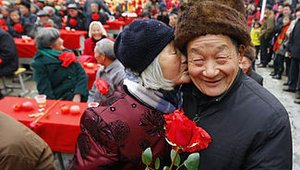
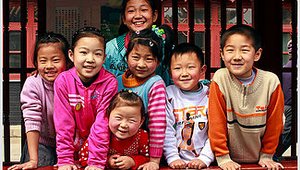
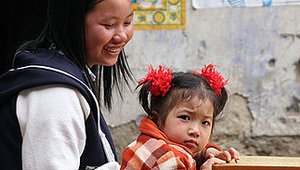
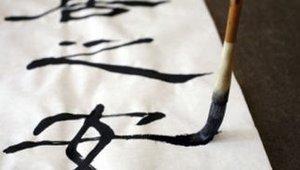
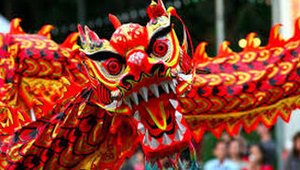
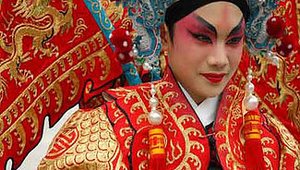
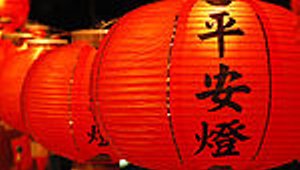
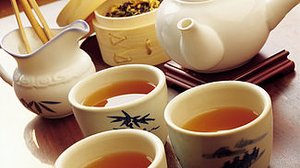
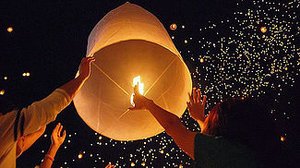
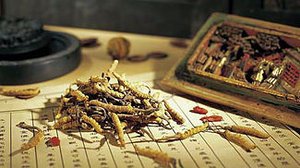
CHINA GAY
TOURS
Travel Experience Gay China
+0086 137 - 6159 - 2015
hello@chinagaytours.com
HOME
TOURS
ABOUT US
GAY GUIDE
CONTACT US
FAQ
BOOK NOW
BLOG
OVERVIEW CHINA
TRAVEL TIPS
TAILOR MADE TRiP
OUR GUIDES